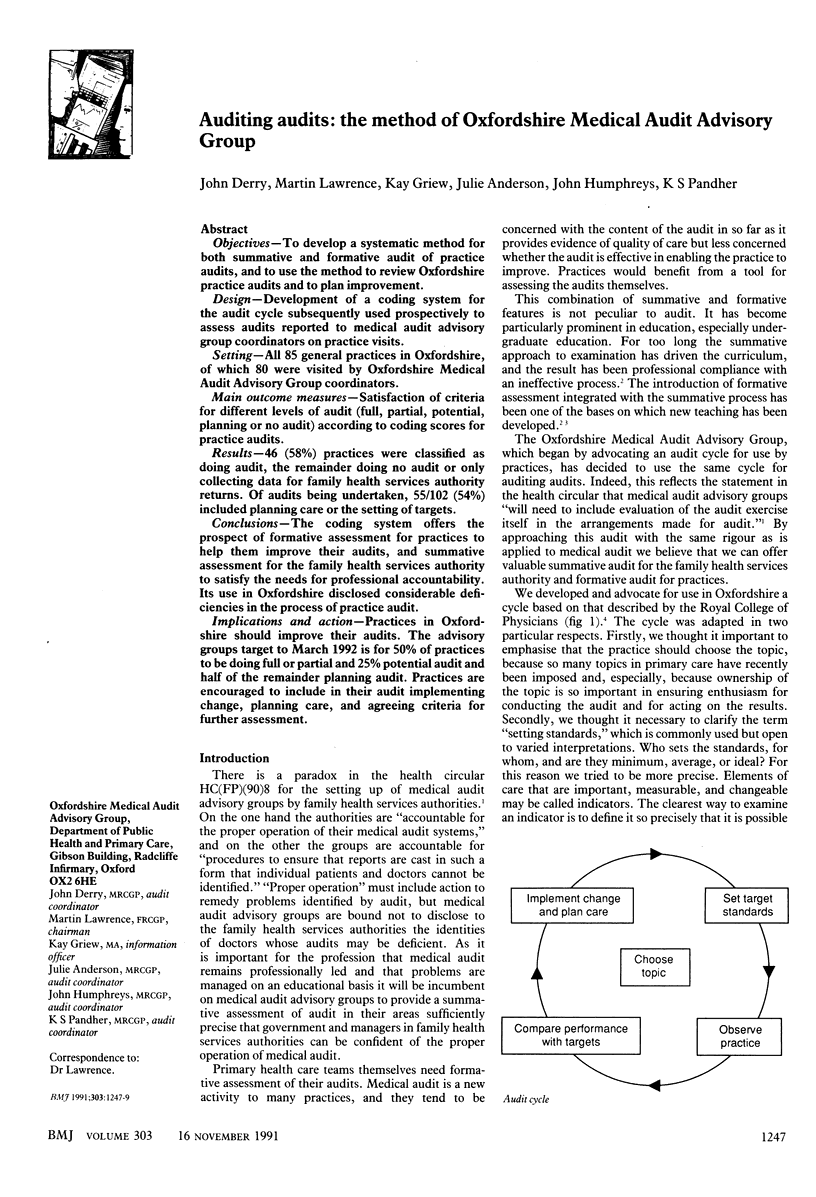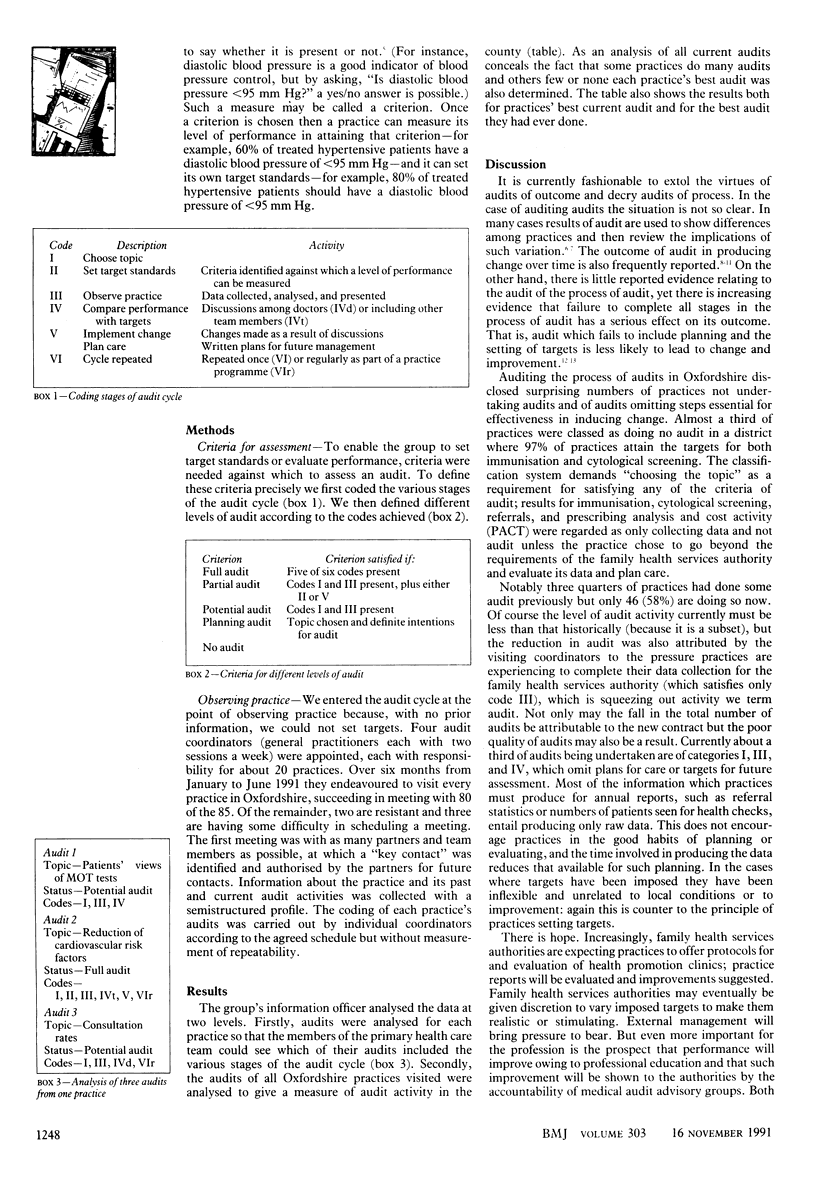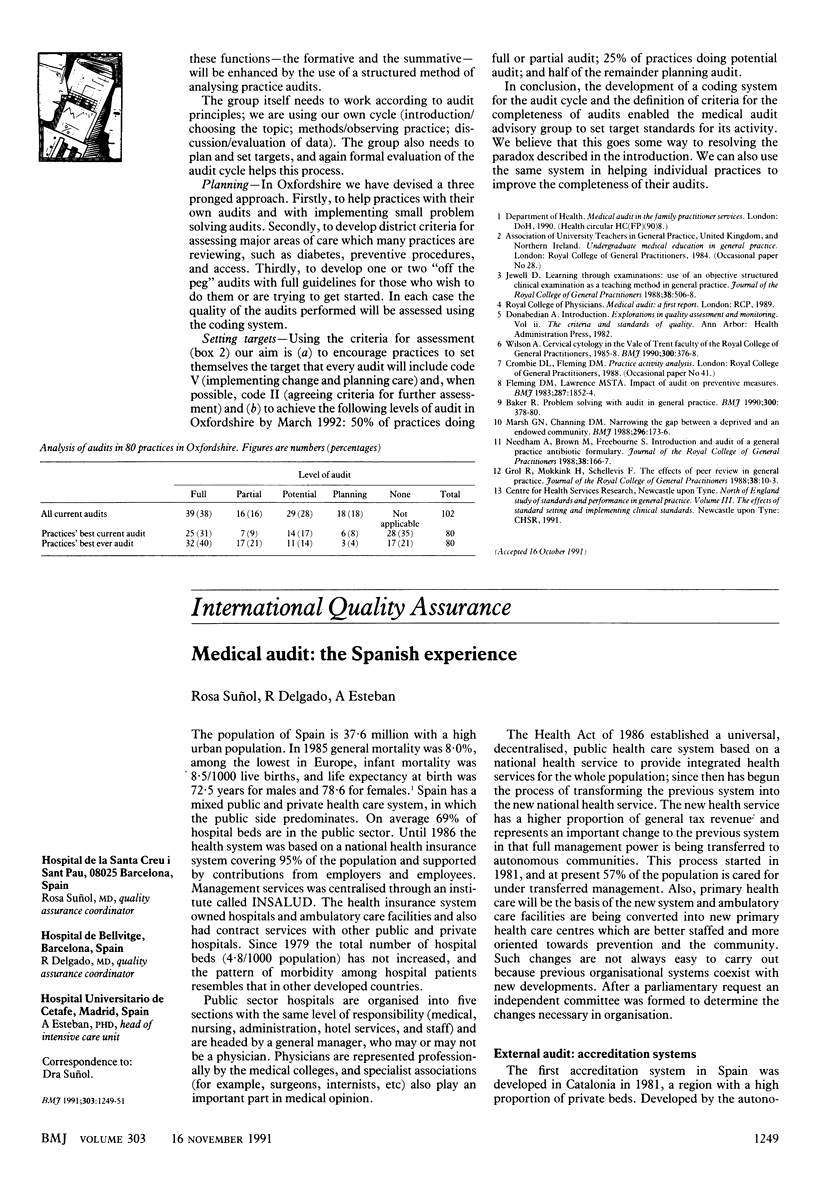Abstract
OBJECTIVES--To develop a systematic method for both summative and formative audit of practice audits, and to use the method to review Oxfordshire practice audits and to plan improvement. DESIGN--Development of a coding system for the audit cycle subsequently used prospectively to assess audits reported to medical audit advisory group coordinators on practice visits. SETTING--All 85 general practices in Oxfordshire, of which 80 were visited by Oxfordshire Medical Audit Advisory Group coordinators. MAIN OUTCOME MEASURES--Satisfaction of criteria for different levels of audit (full, partial, potential, planning or no audit) according to coding scores for practice audits. RESULTS--46 (58%) practices were classified as doing audit, the remainder doing no audit or only collecting data for family health services authority returns. Of audits being undertaken, 55/102 (54%) included planning care or the setting of targets. CONCLUSIONS--The coding system offers the prospect of formative assessment for practices to help them improve their audits, and summative assessment for the family health services authority to satisfy the needs for professional accountability. Its use in Oxfordshire disclosed considerable deficiencies in the process of practice audit. IMPLICATIONS AND ACTION--Practices in Oxfordshire should improve their audits. The advisory groups target to March 1992 is for 50% of practices to be doing full or partial and 25% potential audit and half of the remainder planning audit. Practices are encouraged to include in their audit implementing change, planning care, and agreeing criteria for further assessment.
Full text
PDF


Selected References
These references are in PubMed. This may not be the complete list of references from this article.
- Baker R. Audit in person: Problem solving with audit in general practice. BMJ. 1990 Feb 10;300(6721):378–380. doi: 10.1136/bmj.300.6721.378. [DOI] [PMC free article] [PubMed] [Google Scholar]
- Fleming D. M., Lawrence M. S. Impact of audit on preventive measures. Br Med J (Clin Res Ed) 1983 Dec 17;287(6408):1852–1854. doi: 10.1136/bmj.287.6408.1852. [DOI] [PMC free article] [PubMed] [Google Scholar]
- Grol R., Mokkink H., Schellevis F. The effects of peer review in general practice. J R Coll Gen Pract. 1988 Jan;38(306):10–13. [PMC free article] [PubMed] [Google Scholar]
- Jewell D. Learning through examinations: use of an objective structured clinical examination as a teaching method in general practice. J R Coll Gen Pract. 1988 Nov;38(316):506–508. [PMC free article] [PubMed] [Google Scholar]
- Marsh G. N., Channing D. M. Narrowing the health gap between a deprived and an endowed community. Br Med J (Clin Res Ed) 1988 Jan 16;296(6616):173–176. doi: 10.1136/bmj.296.6616.173. [DOI] [PMC free article] [PubMed] [Google Scholar]
- Needham A., Brown M., Freeborn S. Introduction and audit of a general practice antibiotic formulary. J R Coll Gen Pract. 1988 Apr;38(309):166–167. [PMC free article] [PubMed] [Google Scholar]
- Wilson A. Cervical cytology in the Vale of Trent faculty of the Royal College of General Practitioners, 1985-8. BMJ. 1990 Feb 10;300(6721):376–378. doi: 10.1136/bmj.300.6721.376. [DOI] [PMC free article] [PubMed] [Google Scholar]


